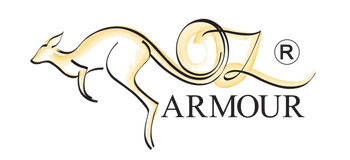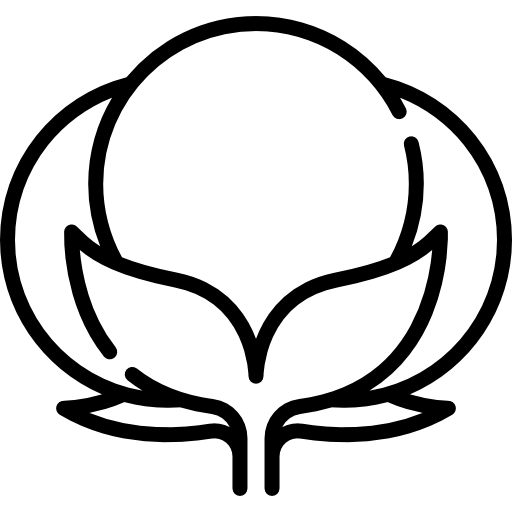Una corretta gestione delle riserve di polline e nettare è essenziale per mantenere un alveare sano e produttivo. Per gli apicoltori, capire come supportare queste riserve può fare una differenza significativa per il benessere generale della colonia. In questa guida, spiegheremo perché le riserve di polline e nettare sono importanti, come valutarle e supportarle e come affrontare le sfide comuni dell'apicoltura.
Perché le riserve di polline e nettare sono essenziali per la salute dell'alveare
Polline e nettare Sono le risorse fondamentali da cui le api dipendono per la loro sopravvivenza e la crescita della colonia. Il polline fornisce proteine e grassi essenziali necessari per lo sviluppo delle giovani api, mentre il nettare è la principale fonte di carboidrati, convertita in miele e immagazzinata per produrre energia.
Il ruolo del polline nella nutrizione delle api
Il polline è ricco di nutrienti essenziali per lo sviluppo della covata. Senza polline a sufficienza, le api non possono nutrire adeguatamente la successiva generazione di api operaie, il che ha un impatto diretto. forza della colonia. Quando raccolta di polline è robusto, l'alveare prospera perché ogni ape è ben nutrita e preparata per il suo ruolo.
Il ruolo del nettare nella sostenibilità dell'alveare
Il nettare alimenta l'alveare, fornendo alle api adulte l'energia necessaria per lavorare, procurarsi il cibo e proteggere la colonia. Le api convertono il nettare in miele, un alimento a lungo termine. negozio di alimentari che sostiene l'alveare durante i periodi di scarsità, come l'inverno. Questo raccolta di nettare Il processo è fondamentale per la sostenibilità dell'alveare durante tutto l'anno.
Valutazione delle riserve di polline e nettare del tuo alveare
Come apicoltore, conoscere lo stato attuale delle riserve di polline e nettare del tuo alveare ti aiuta a prendere decisioni informate sull'integrazione, sulla posizione dell'alveare e sulle pratiche di gestione.
Monitoraggio del comportamento di foraggiamento
Un modo efficace per valutare la salute del tuo alveare è osservare comportamento di foraggiamentoLe api raccolgono polline e nettare dalle piante vicine, quindi osservare il loro livello di attività può rivelare molto sul fabbisogno di risorse dell'alveare. Quando l'attività di foraggiamento è elevata, spesso indica che l'ambiente supporta le esigenze dell'alveare.
Riconoscere i segnali di scarsità
Ispezionare i telaini dell'arnia per depositi di polline e nettare è un altro passaggio fondamentale. Un alveare sano in genere ha telaini parzialmente riempiti con riserve di polline e nettare. Se queste riserve sono basse, le api potrebbero avere difficoltà a sostenere il loro sviluppo della covata e crescita delle colonie.
Migliori pratiche per la gestione delle riserve di polline e nettare
Gli apicoltori svolgono un ruolo fondamentale nel garantire alle loro api risorse sufficienti. Attraverso il corretto posizionamento dell'arnia, il supporto foraggero e, se necessario, l'alimentazione supplementare, è possibile contribuire a mantenere sane le riserve di polline e nettare.
Migliorare la disponibilità del foraggio
Piantare una gamma diversificata di piante da fiore intorno ai tuoi alveari incoraggia impollinazione e rende la ricerca di cibo più accessibile alle api. Considerate di piantare fiori che siano amici delle api e che fioriscano in stagioni diverse per fornire fonti di cibo costanti.
Creare un ambiente favorevole alle api
È possibile apportare piccole modifiche all'habitat per migliorarlo raccolta di polline assicurandoti che le tue api abbiano accesso a diverse piante.Questa diversità favorisce un’alimentazione equilibrata, migliorando salute delle api E forza della colonia col tempo.
Strategie di alimentazione supplementare
In periodi di scarsità, o se durante le ispezioni dell'alveare si notano scarse scorte di polline e nettare, potrebbe essere necessario fornire integratori per supportare l'arnia. Ecco come farlo in modo efficace:
- Polpette di polline: Possono essere posizionati all'interno dell'alveare per fornire proteine quando il polline è scarso.
- Sciroppo di zucchero: Nei periodi in cui le fonti di nettare scarseggiano, un semplice sciroppo di zucchero può aiutare a integrare il fabbisogno energetico delle api.
Utilizzando il diritto attrezzature per l'apicoltura per l'alimentazione può prevenire la sovralimentazione o la contaminazione, consentendo all'alveare di prosperare senza interrompere i suoi modelli naturali di foraggiamento.
Considerazioni sulla gestione stagionale dei depositi di polline e nettare
Il fabbisogno nutrizionale delle api varia a seconda delle stagioni. Pianificare questi cambiamenti garantisce che l'alveare sia pronto ad affrontare diverse sfide ambientali.
Gestione della primavera e dell'estate
Durante la primavera e l'estate, il tuo alveare avrà livelli di attività elevati e un aumento sviluppo della covataQuesto è il momento di incoraggiare la ricerca di cibo e massimizzare l'accumulo di risorse. Monitorare sciamare tendenze e assicurarsi che le api abbiano abbastanza spazio per immagazzinare il nettare e il polline in più che stanno portando dentro.
Prepararsi per l'inverno
Con l'avvicinarsi dell'inverno, è essenziale garantire alle api un'adeguata depositi di polline e nettareLe api fanno affidamento su queste riserve per sopravvivere ai mesi più freddi, quando la ricerca del cibo non è un'opzione. Effettua un'ispezione di fine stagione per verificare che l'arnia abbia miele e polline a sufficienza, fornendo ulteriore nutrimento se necessario per evitare la fame.
Affrontare le sfide comuni nella gestione dei depositi di polline e nettare
La gestione delle riserve di polline e nettare non è priva di sfide. Dagli stress ambientali alle infestazioni parassitarie, gli apicoltori devono rimanere vigili per proteggere i loro alveari.
Controllo di parassiti e malattie
Parassiti come il acaro varroa può devastare un alveare, compromettendolo depositi di polline e nettare e la salute generale della colonia. Ispezioni regolari dell'alveare e adeguate misure di controllo dei parassiti possono aiutare a individuare e gestire queste minacce prima che si aggravino.
Consigli efficaci per il controllo dei parassiti
- Monitorare i livelli degli acari: Controllare regolarmente la presenza di acari per individuare tempestivamente le infestazioni.
- Utilizzare rimedi naturali: Se vengono rilevati parassiti, prendere in considerazione metodi sicuri di controllo dei parassiti che non danneggino l'alveare.
Gestione degli stress ambientali
I cambiamenti climatici, l’inquinamento e la perdita dell’habitat possono avere un impatto comportamento di foraggiamento e ridurre le fonti di polline e nettare disponibili. Se ti trovi in una zona con foraggio naturale limitato, integrare le riserve del tuo alveare e piantare piante adatte alle api sono passaggi cruciali per mitigare queste sfide.
Collezione di tute da apicoltore e tute per bambini di OZarmour
Noi di OZarmour ci impegniamo a offrire prodotti essenziali per l'apicoltura che garantiscano sicurezza, comfort e qualità agli apicoltori di tutte le età.Nostro "Le migliori tute da apicoltore E Tute per bambini da apicoltoreLa collezione "OZarmour" offre una protezione robusta con design studiati per durare a lungo e facilitare i movimenti, garantendo che ogni apicoltore, dagli hobbisti ai professionisti, possa concentrarsi sulla gestione dell'alveare senza distrazioni. Le nostre tute per bambini offrono la stessa qualità delle versioni per adulti, offrendo ai giovani apicoltori un'esperienza sicura mentre imparano la cura dell'alveare e l'importanza delle riserve di polline e nettare. Con OZarmour, l'apicoltura è sicura, accessibile e piacevole per tutta la famiglia.
Conclusione
Una corretta gestione delle riserve di polline e nettare è essenziale per mantenere un alveare rigoglioso e produttivo. Comprendendo il ruolo di queste risorse nella nutrizione delle api e nella sostenibilità dell'alveare, gli apicoltori possono supportare le loro colonie durante i cambiamenti stagionali e le sfide ambientali. Monitorare il comportamento di foraggiamento, ispezionare i telaini dell'alveare, aumentare la disponibilità di foraggio e fornire nutrimento supplementare quando necessario sono tutte pratiche chiave per una salute ottimale dell'alveare. Con la vigilanza contro i parassiti e gli interventi correttivi per i fattori di stress ambientale, gli apicoltori possono proteggere efficacemente le loro colonie. Abbinati a dispositivi di protezione di qualità da OZarmour, l'apicoltura diventa un'esperienza gratificante, che consente di avere api più sane e alveari più forti.












